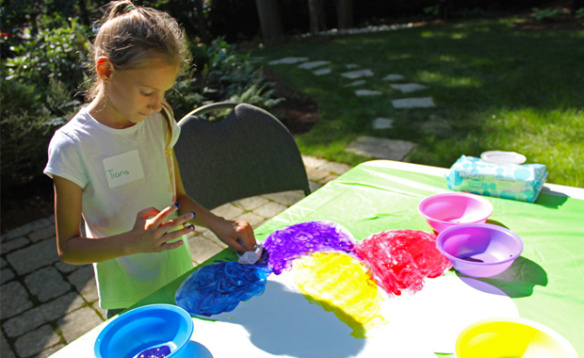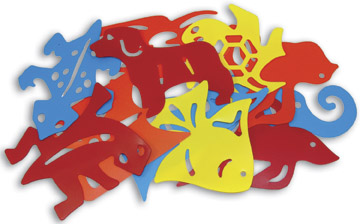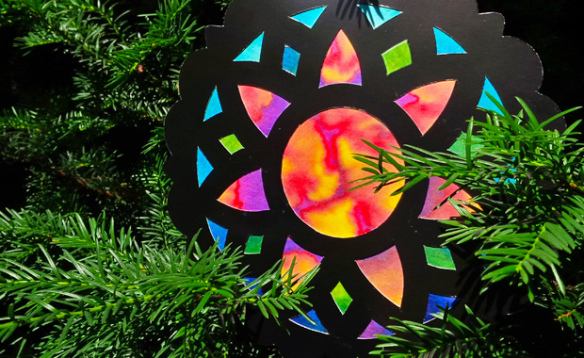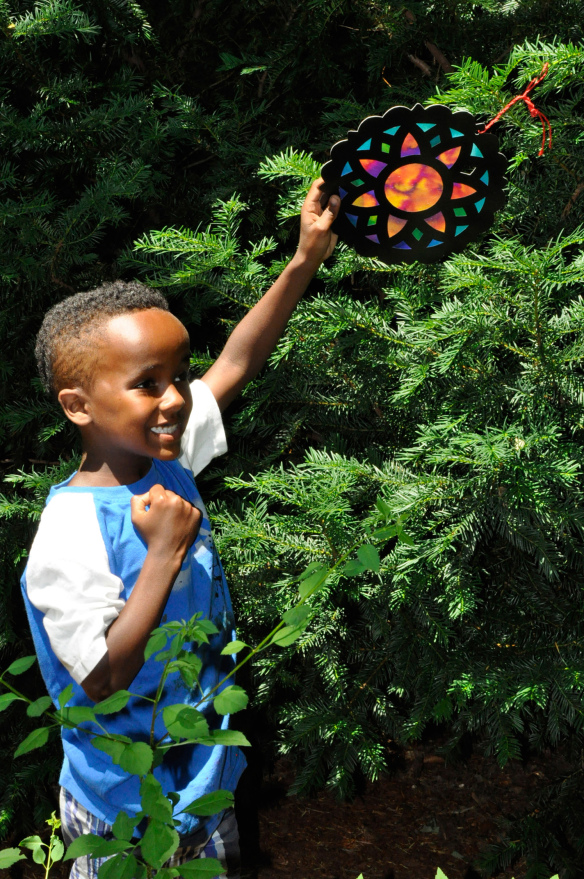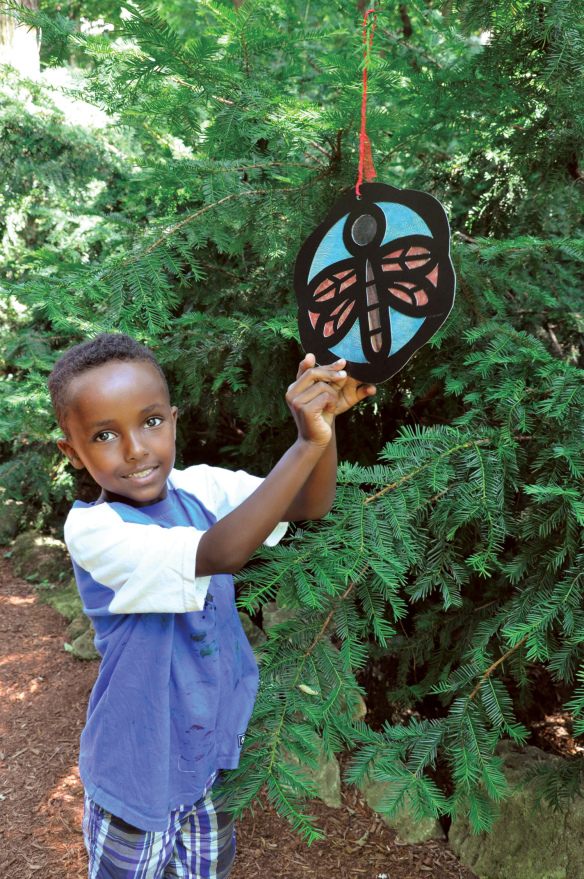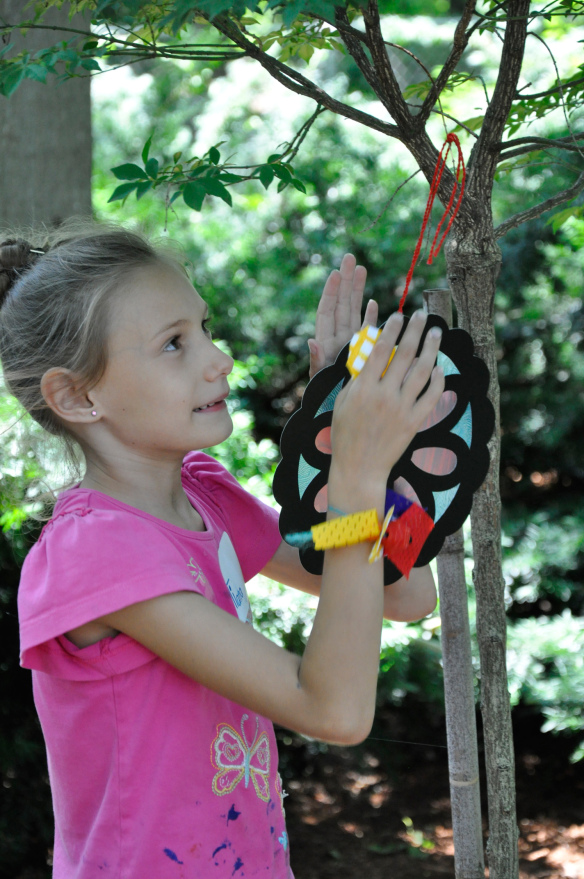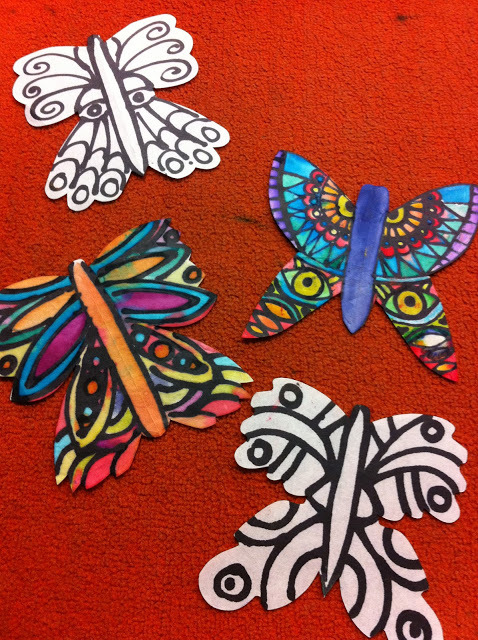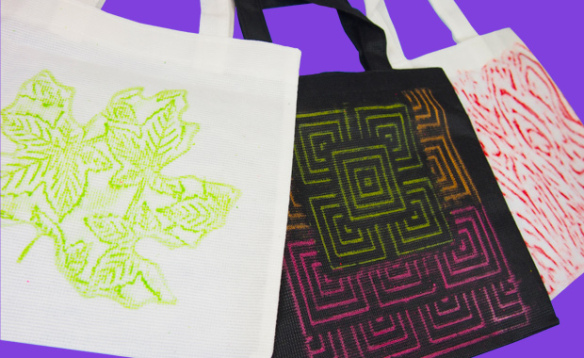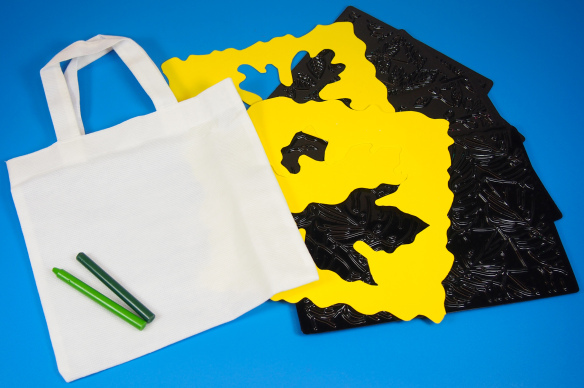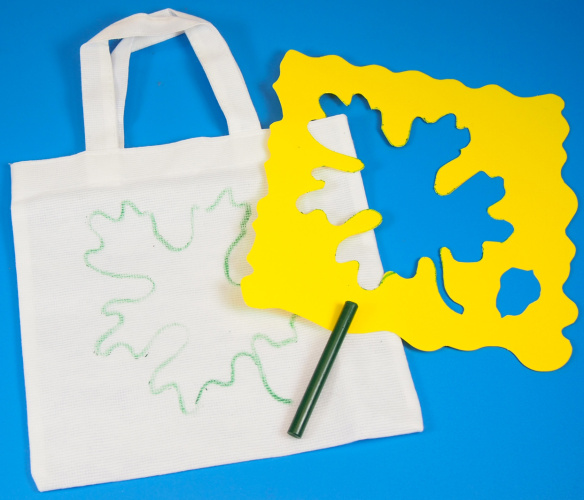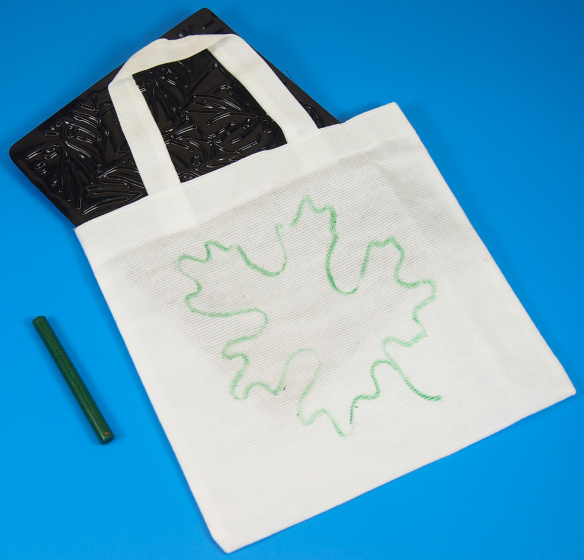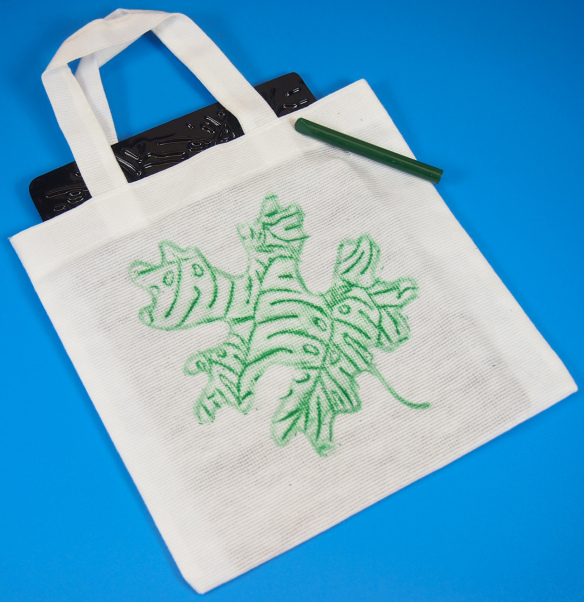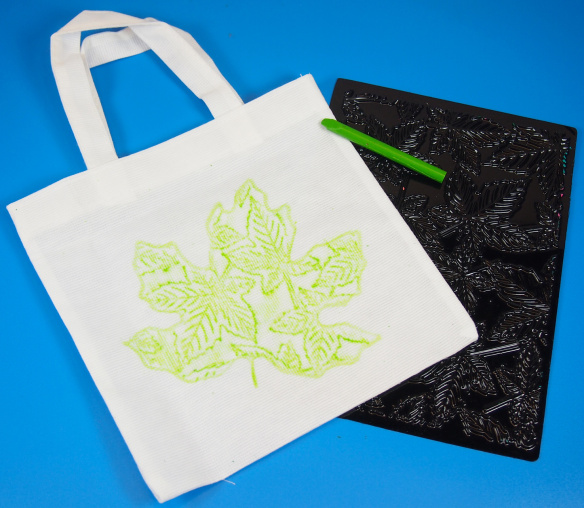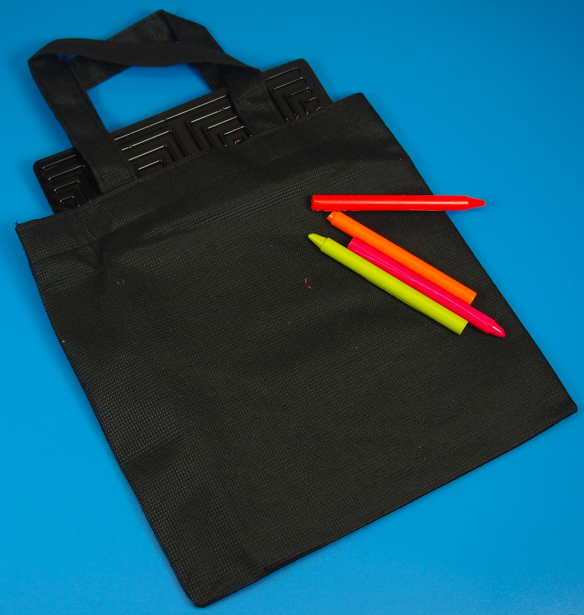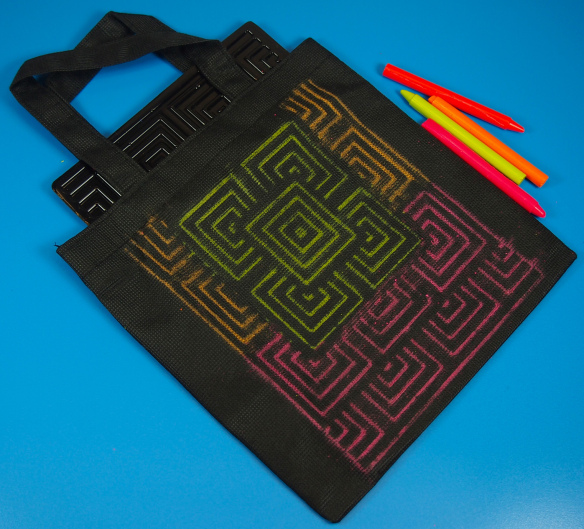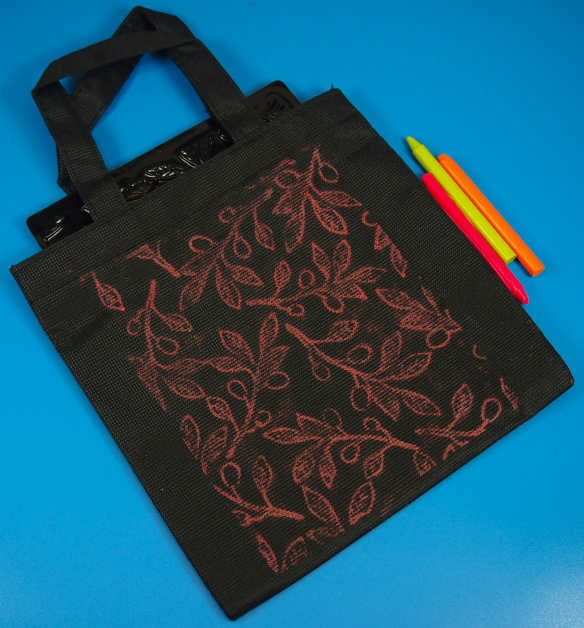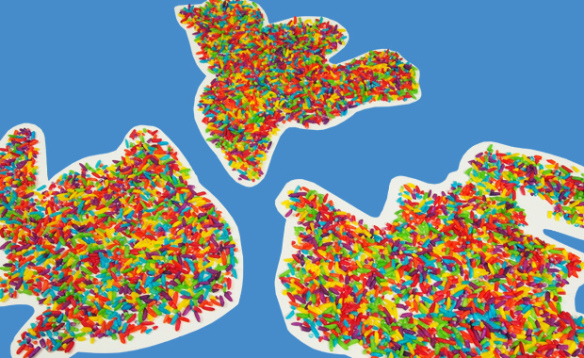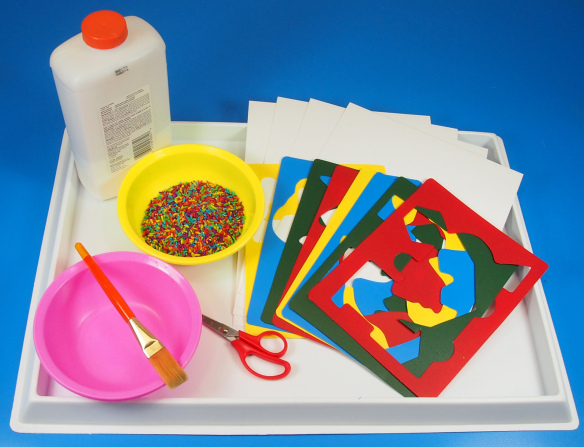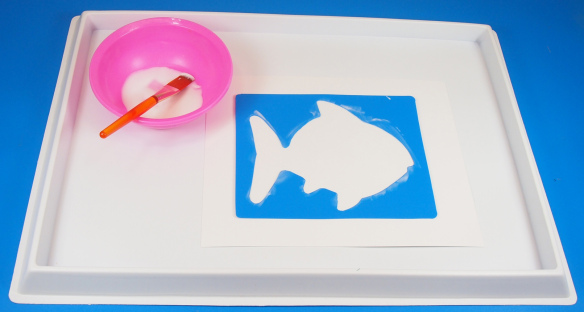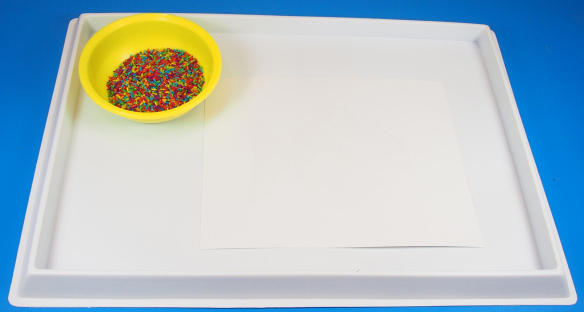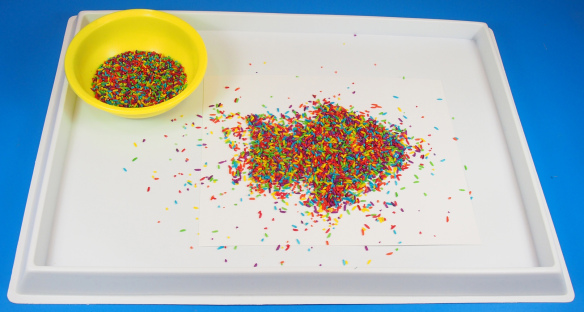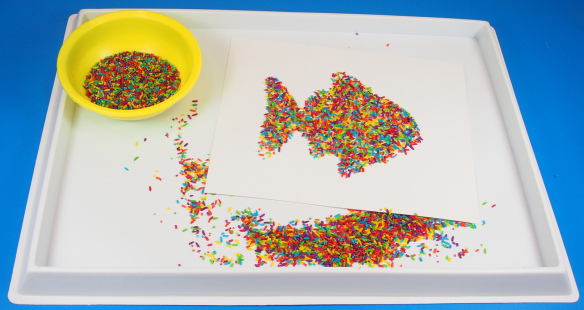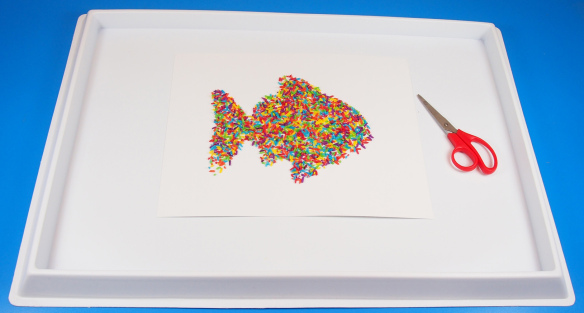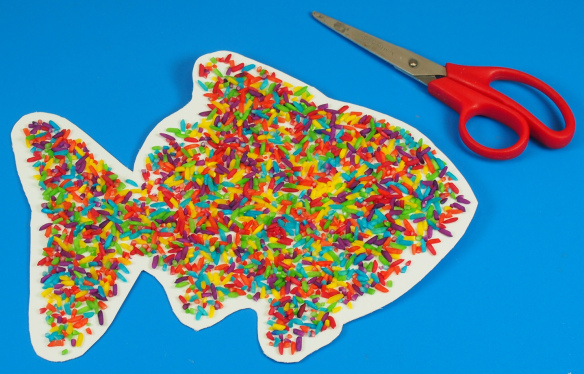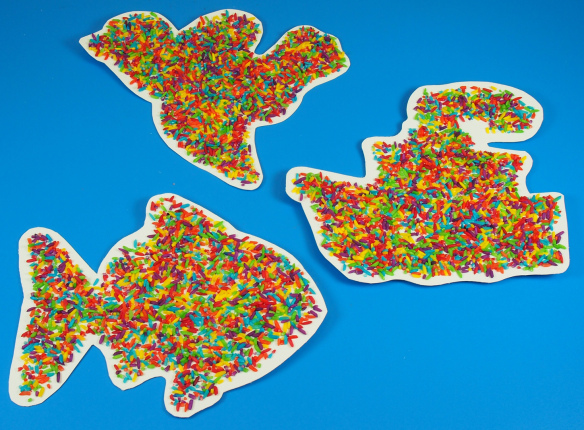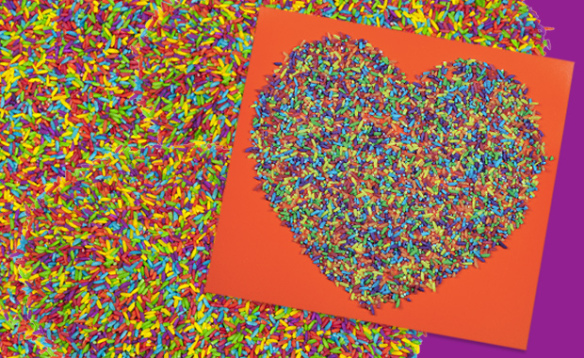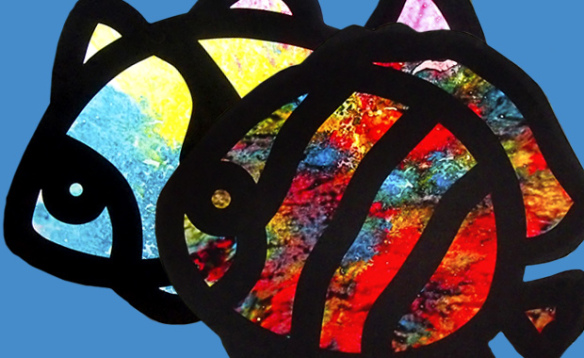
Last year, one of our most popular crafts used a technique with shaved crayon bits to make authentic-looking stained glass images. Try it out for yourself! The stained glass effect can be applied to any of our black-frame designs.
Age: 5+ (Adult Supervision Required)
Duration: 20-30 minutes
You’ll Need:
• R52087 Tropical Fish Stained Glass Frames / R52070 Stained Glass Frames /R52074 Junior Stained Glass Frames / R52093 Stained Glass Lantern
• Unlabeled crayon sticks
• Pencil sharpener
• Black marker
• Wax paper
• Paper towel
• Iron (CAUTION: Use adult supervision!)
• Scissors
• Glue

Stack the sheets of wax paper and staple them together if they aren’t already attached. Place several sheets of the paper towel on top of and below the wax paper sheets to minimize mess. Lift the top sheet up and crease along the spine to hold it in place above the second sheet of wax paper. This second sheet of wax paper will be your workspace.
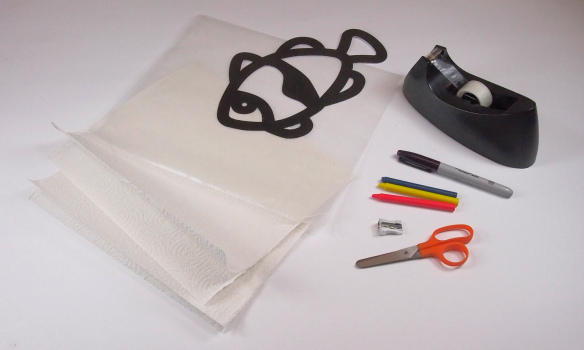
Place the wax paper on an iron-safe surface, preferrably a craft table.
Use the pencil sharpener to sharpen the ends of the crayon. Hold the pencil sharpener and the crayon stick above the workspace so that the shavings fall onto the wax paper. Keep sharpening the crayon ends until you have just about covered the workspace area. Tip: Use different colors to make the best crayon shavings mix. In the next step after this one, I found that using fluorescent-colored crayons produced the best results. The colors were so bright and beautiful. If you never had a real use for fluorescent crayons (as the colors don’t show up so well on regular paper), save them instead for this project!
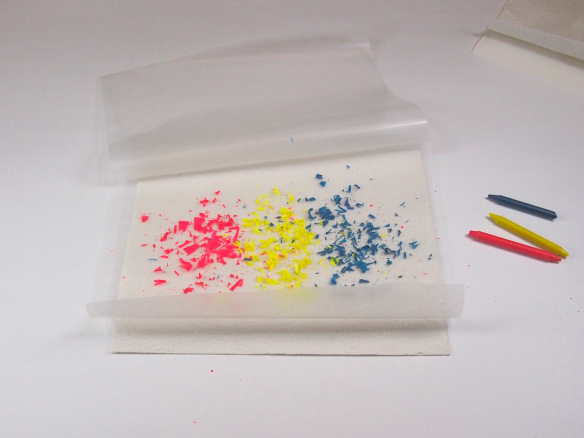
Once you have just about covered the sheet of wax paper, replace the first sheet of wax paper over top to cover. Make sure that the top and bottom of the wax paper sandwich is covered with paper towel. This is crucial for this next step. CAUTION: Using an iron requires adult supervision. Make sure you do not use any hot appliances without proper protection (oven mitts, for instance!).
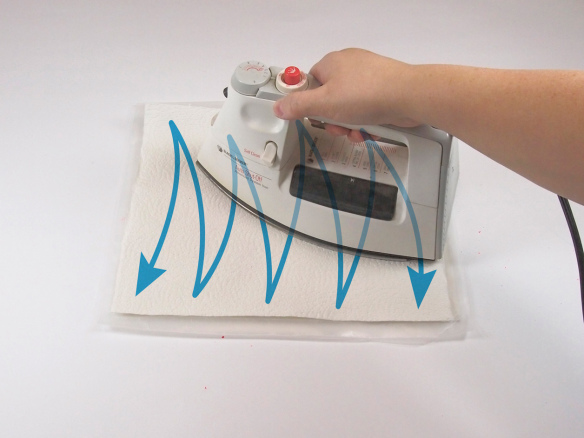
Set the iron between the LOW and MEDIUM settings. Place the iron on top of the paper towel. Gradually push the iron across the paper towel in a zig-zagging motion. This will help to heat up the crayon wax to a liquid. While you push the iron across the sheet of paper, the crayon colors will converge and blend to create a wonderful stained glass look.
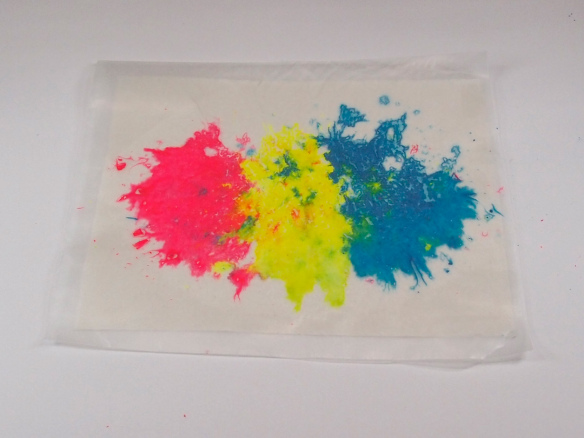
When you have run the iron several times over the sheet of paper, remove the iron and have a look between the layers of wax paper to see how the crayon melt is forming. If it looks like it needs a little more work, fold the wax paper down and cover with the paper towel, then run over it with the iron.
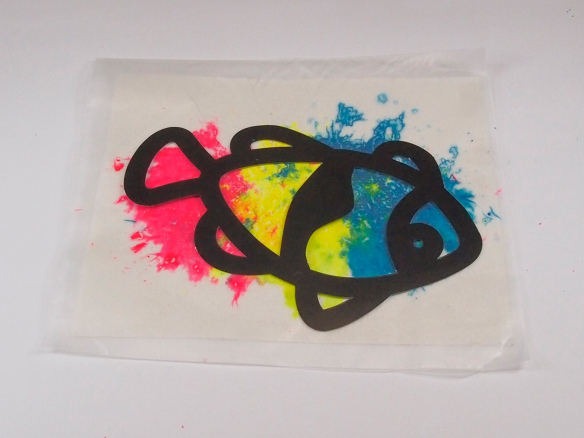
Place the stained glass design onto the crayon wax paper and adjust so that all the gaps are mostly covered by the color underneath. Use a black marker to trace around the outside edge of the stained glass design. This is a step that students will enjoy trying out for themselves as they can get to see how their finished art piece will look like.
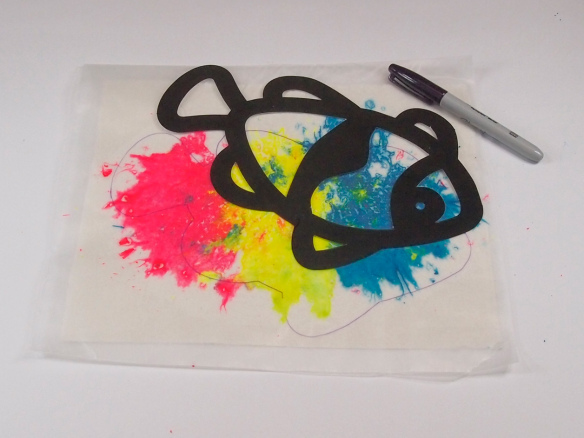
When you have finished tracing, cut out the crayon wax melt from the resulting outline. Hint: Make sure you keep track of what side of the stained glass design goes on top of the crayon wax melt. Use tape to secure the edges of the crayon wax melt and the stained glass design together.
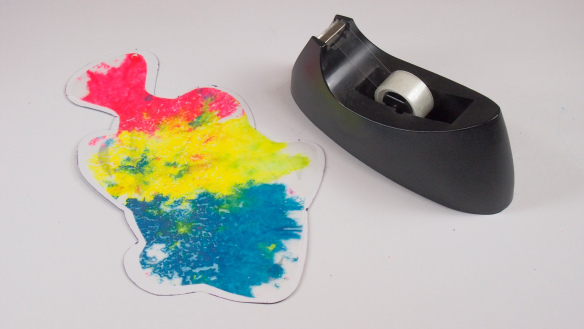
Flip the design over to make sure none of the wax paper shows outside of the edges. Trim any excess off with your scissors or reapply and tape the wax melt onto the stained glass design.
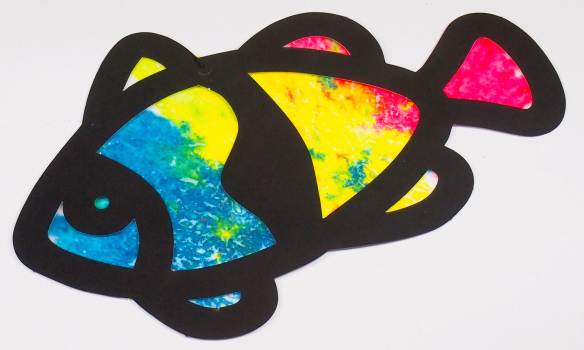
Experiment with different colors and our other stained glass designs (the product numbers are available above in the materials list). The colors really are gorgeous! Hang the stained glass designs against a window to catch the light. When sunlight shines through the wax, the color will bounce off and reflect into the room. Enjoy the view. Talk to your students about the properties of light and color while creating the stained glass designs.
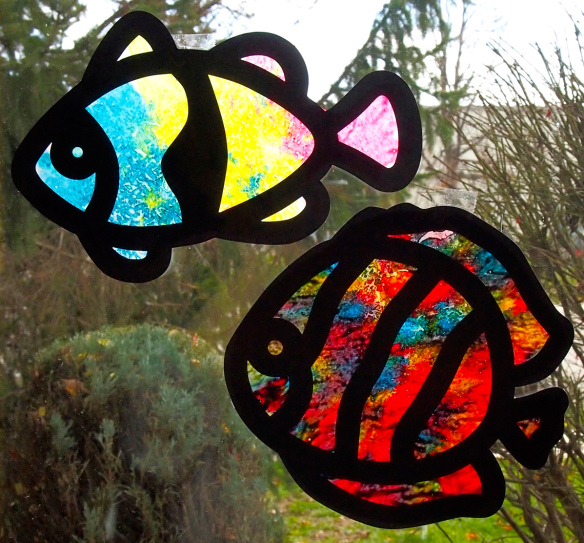
If you have a large window in your classroom, make an entire theme of stained glass designs to hang up! The view looks great both inside and out!

Thanks for stopping by! Give us your input or send us photos of your own projects to subscriber@roylco.ca. We’d love to hear from you!










